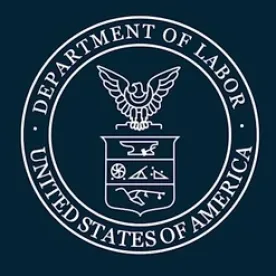In June, the Wage and Hour Division of the Department of Labor, the division tasked with enforcing the Family Medical Leave Act (FMLA), revised its model forms for employers to give to employees to support certain FMLA-qualifying reasons for leave. These new forms are intended to clarify compliance requirements and streamline administration of FMLA leave:
-
WH-380-E — Employee’s Serious Health Condition — For when a leave request is due to the medical condition of the employee.
-
WH-380-F — Family Member’s Serious Health Condition — For when a leave request is due to the medical condition of the employee’s family member.
-
WH-384 — Qualifying Exigency — For when a leave request arises out of the foreign deployment of the employee’s spouse, son, daughter or parent.
-
WH-385 — Military Caregiver Leave of a Current Servicemember — For requesting leave to care for a family member who is a current service member with a serious injury or illness.
-
WH-385-V — Military Caregiver Leave of a Veteran — For requesting leave to care for a family member is who a covered veteran with a serious injury or illness.
At the same time, the Department of Labor issued a Q&A to guide use of the revised forms. The department emphasized that the revisions were “to make [the forms] easier to understand for employers, leave administrators, healthcare providers, and employees seeking leave[.]” As the department notes, the revised forms convey and collect the same information as previous model forms. And, according to the regulations, this information can be provided in any format, making use of these forms optional. The Q&A otherwise provides little in the way of explanation of how these new forms differ from and improve upon previous iterations. So, what’s new and different with these revised forms?
The Good
-
By organizing responses into a check-the-box format with less narrative, the revised forms will reduce guesswork from both the medical provider answering the questions and the employer interpreting the responses (and handwriting) of medical providers.
-
This new format also improves clarity surrounding whether the employee has a serious health condition by breaking conditions into categories and, again, providing boxes to check. Importantly, this final version includes a box in which the health care provider can confirm there is NO serious health condition.
-
The revised forms also capture information to support leaves taken for chronic, intermittent, long-term or permanent conditions — a significant improvement considering employees must report the need for leave 30 days in advance when foreseeable.
-
Another helpful addition is an improved template for the medical provider to describe the duration and frequency of required care and treatment, with an encouragement to the medical provider to provide their “best estimate.”
-
By reducing the call for narrative responses to questions, there is less potential for confidential medical information to be disclosed on the new forms. The prior certification forms invited medical providers to describe medical facts related to the condition, including “symptoms, diagnosis, or any regimen of continuing treatment,” and dedicated several blank lines to respond. The forms now expressly state that this information is not required and note that certain information (e.g., diagnosis) may be restricted by state or local law. This may make it easier for employers to use the same form for federal FMLA leave and other leaves, including under state law.
The “Less Than Good”
Despite improvements, there remain some problems from the prior certification forms that have not been addressed, and the new forms themselves present some possible concerns.
-
The revised forms still bury the lede — the primary question for employers is: “why can’t the employee come to work?” Despite all the streamlining of the new forms, the actual medical basis for the employee’s need for leave is on page 3 of 4.
-
The reduced narrative response format will not necessarily eliminate vague and incomplete answers that will still require follow-up.
-
Medical providers are asked to first check the box for the category of the employee’s serious health condition and then check additional boxes within each category. This check-the-box format may continue to lead to incomplete or inconsistent responses through boxes being skipped or more boxes being checked. In addition, it may suggest a more permissive “rubber-stamping” of an employee’s desire to take leave without a rigorous consideration by the medical provider.
Overall
The new forms are beneficial in that they present a more streamlined format with targeted questions and clearer instructions. This polished format may make the forms quicker for providers to complete and lead to more complete responses, thus alleviating some need for follow-up. Employers should also be aware that these forms do not apply to the Families First Coronavirus Response Act (FFCRA), which has different documentation requirements.
Requests for Public Comment
On the heels of issuing the revised FMLA model forms, the U.S. Department of Labor also announced two requests for public comment relating to the administration of the FMLA as well as a more general request to understand the benefits and challenges of employer-provided paid leave.
The first Request for Information from the Wage and Hour Division asks for comments addressing several aspects of complying with the FMLA. Stating that “surveys continue to show an ongoing need for education and awareness in the administration and use of FMLA leave[,]” the department generally asks: “What would employees / employers like to see changed in the FMLA regulations to better effectuate the rights and obligations under the FMLA?”
Specifically, the department seeks input on several areas of compliance, including whether the definition of “serious medical condition” needs to be revisited, what challenges employers have experienced in applying the regulatory definition of a serious health condition, what difficulties, if any, employers have had with intermittent leave, and any issues complying with the notice requirements for taking FMLA leave. Additionally, the department is interested in understanding what, if any, challenges employers and employees have experienced with the medical certification process that are not addressed by the revisions to the forms issued in June. The department generally invites comment on whether any additional guidance is needed on the administration of FMLA leave.
Written comments on this request must be submitted to the department on or before September 15, 2020.
Also, on July 16, the Women’s Bureau of the Department of Labor issued a separate Request for Information. The bureau broadly seeks to understand the benefits and costs of paid leave as well as to obtain information about what can be learned from administering leave under the FFCRA. Specifically, the bureau is asking for comment on following areas:
-
The beneficiaries of paid leave and the bearer of the costs.
-
The unique needs of workers and employers in regard to paid time off for care obligations.
-
The features of the existing public (e.g., state-administered) and private (employer-provided) programs that work well, reasons those features work well and features and provisions that make a paid leave program successful for all stakeholders.
-
The features of the existing public and private programs that do not work well or are burdensome, the reasons why and any features and provisions that present challenges for stakeholders.
-
The current barriers, if any, to implementing or improving paid leave, as well as regulatory barriers to providing paid leave.
-
The possibilities of what could be done to improve existing programs, which include state and employer-sponsored paid options and what impediments, costs and otherwise are faced in implementing those improvements.
-
The challenges of balancing costs and benefits with paid leave and the differences in costs and benefits among types and sizes of employers, including small businesses.
Employers are invited to submit written comments for this request on or before September 14, 2020.





 />i
/>i

